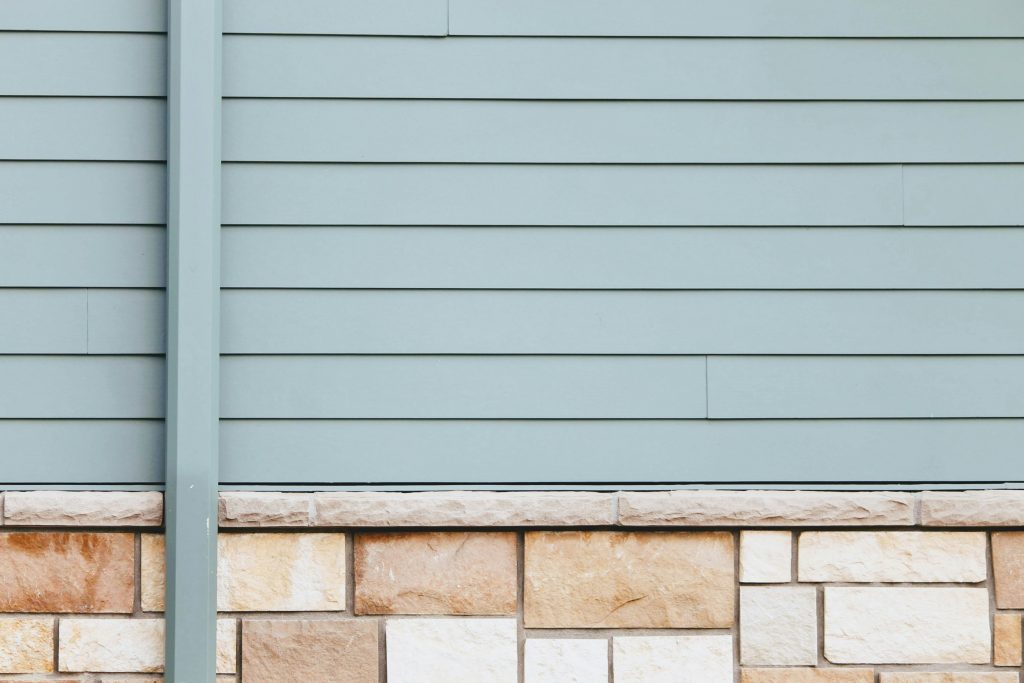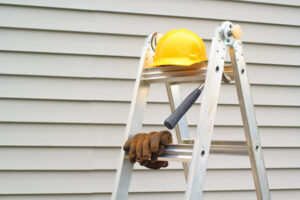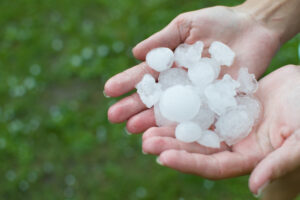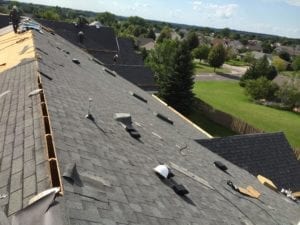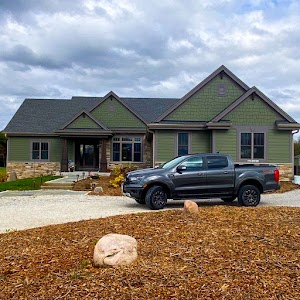You’ve likely wondered, “How long does my vinyl siding last?” Well, typically, it’s between 20 to 40 years. However, premium types can keep your house looking sharp for up to 60 years! But, it’s not just about the type of siding; factors like weather conditions and how well you maintain it play a big part, too. Spot signs of aging like brittleness or fading? It might be time for a replacement. Want to know more about prolonging your siding’s lifespan? Let’s explore this further.
Understanding Vinyl Siding
What exactly is vinyl siding, you might ask? Well, it’s a type of exterior cladding that’s commonly used on residential and some commercial buildings. It’s made from a plastic material known as PVC (polyvinyl chloride). This type of siding is designed to give your home an attractive look while also protecting it from the elements.
In terms of its design, vinyl siding comes in a variety of colors and styles. You can choose from traditional lap, vertical, and shake styles, as well as a range of colors to suit your personal taste. It’s also available in different textures, including smooth and wood-grain.
One of the major advantages of vinyl siding is its low maintenance. Unlike wood, you won’t have to paint or stain it. It’s also resistant to pests and doesn’t rot or warp. Plus, it’s lightweight and easy to install.
However, it does have some downsides. For example, it’s not as durable as some other types of siding, such as fiber cement or brick. It can crack in extremely cold weather and fade over time due to sun exposure. But overall, it’s a popular choice for many homeowners.
Lifespan of Vinyl Siding
You’re probably wondering how long your vinyl siding will last; on average, it can serve you well for about 20 to 40 years, depending on factors such as weather conditions and maintenance. This means once you’ve installed it, you’re set for a couple of decades. That’s a considerable amount of time for a home upgrade.
However, this lifespan isn’t standard for all vinyl siding. Some premium varieties boast a lifespan of up to 60 years. But remember, these figures are based on averages. Your siding could last longer or shorter depending on various aspects.
It’s also worth noting that vinyl siding doesn’t abruptly fail when it reaches its lifespan. Instead, it gradually degrades. Over time, you might notice it becoming brittle, fading in color, or warping. These are signs that your siding is aging and could soon need replacement.
Proper care can extend the lifespan of your siding. Regular cleaning, prompt repairs, and avoiding damaging activities can keep it looking great for longer. So, while vinyl siding has a set lifespan, you’ve got a part to play in making it last.
Factors Impacting Vinyl Siding Durability
You might be wondering what factors can impact the durability of your vinyl siding.
Well, weather conditions, regular cleaning and maintenance, and proper installation play significant roles.
Let’s look at how each of these can affect your siding’s lifespan.
Weather Conditions
Adverse weather conditions can greatly affect the durability of your vinyl siding. Extreme heat can cause your siding to warp or buckle, while freezing temperatures might make it brittle and more prone to cracking. Similarly, strong winds can loosen panels, and heavy rains can lead to water damage if your siding isn’t properly installed.
Hailstorms pose a significant threat too, potentially causing dents or even puncturing your siding. Living in coastal areas also has its challenges, as salty air can lead to corrosion over time. So, it’s crucial to consider your local climate when choosing vinyl siding. It’s not just about picking a color and style you like; it’s about ensuring your siding can withstand the weather conditions it’ll face.
Regular Cleaning and Maintenance
Your home’s longevity depends heavily on regular cleaning and maintenance of your vinyl siding. Without it, your siding’s lifespan can decrease significantly. Dirt, grime, and mildew can accumulate, damaging the material and causing it to deteriorate quicker. Washing it at least once a year with a soft brush and a mild detergent will maintain its look and increase its lifespan.
Maintenance isn’t just about cleaning. If you spot any cracks, holes, or bubbling, it’s important to address these immediately. These could be signs of water damage or rot underneath. You’ll want to patch up any small damages or replace panels if necessary. By keeping a close eye on your siding, you’re not just maintaining its appearance, but you’re also extending its longevity.
Proper Installation
Proper installation plays a pivotal role in the durability of vinyl siding, greatly affecting its lifespan. If you’re sloppy in this phase, you’re setting yourself up for problems down the line. Your siding might warp, buckle, or even fall off, leading to costly repairs or replacements. So, you can’t skimp on this step.
Signs of Vinyl Siding Replacement
You might be wondering when it’s time to replace your vinyl siding.
Look out for signs like water damage, damaged or broken siding, fading, and warping or buckling.
These are clear indications that your siding may be past its prime and needs replacement.
Moisture Damage
When water damage starts taking a toll on your vinyl siding, it’s a clear sign that replacement may be necessary. Water damage can occur from severe weather like heavy rain or snow, or due to improper installation. You might notice discolored or warped panels, a clear indication of water damage.
If you see mold, mildew, or fungus growth, that’s also a red flag. It means water is seeping behind the siding, creating a perfect environment for these organisms. But don’t wait until significant damage occurs. Regularly inspect your siding, especially after harsh weather conditions.
Take any sign of water damage seriously, as ignoring it can lead to more serious issues, like structural damage to your home. Act promptly to replace damaged areas and maintain your siding’s longevity.
Cracked or Damaged Siding
Often, damaged or broken siding is an unmistakable sign that it’s time to replace your vinyl siding. You might notice cracks, holes, or bubbles on the surface – these are clear indicators that your siding isn’t performing its job properly.
Cracks or breaks allow moisture to seep in, potentially damaging your home’s structure. Bubbles are a sign of trapped water, a serious concern as it can lead to rot or mold. Holes, potentially caused by insects or weather, compromise the aesthetic and protective functions of your siding.
Ignoring these signs can lead to expensive repairs down the line. If you spot these issues, it’s best to consult a professional to discuss replacement options. Remember, prevention is usually more affordable than cure.
Bleaching
Just as cracks or holes spell trouble, faded vinyl siding is another warning sign that replacement may be necessary. Fading isn’t just an aesthetic issue; it’s also an indication that your siding is aging and may no longer be providing peak protection for your home.
Prolonged exposure to harsh weather and direct sunlight can cause your vibrant siding to lose its color, becoming dull and lackluster. This fading is more than just an eyesore; it’s a sign that the durability of your siding is compromised. Remember, your siding’s color isn’t just for show. The pigments are mixed with the material itself, offering additional UV protection.
When you notice significant fading, it’s time to contemplate replacing your vinyl siding before further damage occurs.
Distorting and Bending
You’ll need to keep an eye out for warping and buckling, as these are telltale signs that your vinyl siding needs replacement. These deformities can result from prolonged exposure to extreme temperatures, poor installation, or old age.
They’re not just cosmetic issues; they can lead to water damage and other structural problems. So, what should you do? Don’t ignore them. If you spot any warping or buckling, it’s time to call a professional.
They’ll assess the damage and recommend whether your siding needs to be repaired or replaced. Don’t just settle for a quick fix. It’s better to invest in new siding that’s resilient and will protect your home for years to come.
After all, prevention is better than cure.
Maintenance Tips for Vinyl Siding
To extend the lifespan of your vinyl siding, proper maintenance is key.
Don’t forget to regularly clean it, inspect it for damage, and make necessary repairs.
Let’s get into how you can accomplish these tasks effectively.
Wash It Thoroughly
Regularly cleaning your vinyl siding not only enhances its appearance but also extends its lifespan. You can keep it looking fresh by washing it down with a garden hose, using a soft brush and a mixture of water and mild detergent. Be sure to rinse thoroughly, as any leftover soap can leave a residue that attracts dirt.
Don’t use harsh chemicals or pressure washers as they can damage the siding. Additionally, take care not to scrub too hard, as this can also cause harm. When it’s looking a bit moldy or mildewy, a solution of bleach and water can help. Just remember to cover any plants or shrubs, as bleach can harm them.
Regular cleaning is an easy way to prolong the life of your siding.
Perform a Detailed Examination
While maintaining your vinyl siding clean is important, it’s just as vital to conduct periodic inspections for any signs of damage.
Don’t wait for issues to become glaringly obvious. Instead, be proactive and check your siding regularly. Look for signs of warping, buckling, or blistering. These could indicate exposure to excessive heat or moisture.
Also, pay attention to any discoloration, fading, or stains as they may suggest underlying issues such as water damage or mold growth. Loose or missing sections are another cause for concern and require immediate attention.
Restore It Properly
If you spot any signs of damage during your inspections, it’s crucial to repair your vinyl siding promptly to prevent further deterioration. Don’t panic – you can handle minor issues yourself.
Small cracks or holes can be fixed with caulk. Just clean the area, apply the caulk, and smooth it out. For larger damages, you might need to replace a section of siding. It’s a bit more complex but still doable. First, remove the damaged section, then cut a new piece to fit. Just make sure it overlaps the adjoining sections for a snug fit.
Conclusion
So, you now know vinyl siding can last 20 to 60 years depending on its quality and maintenance. Remember, its longevity isn’t just about time, but also how well you take care of it.
Watch out for signs of aging like brittleness and fading, and don’t hesitate to replace when necessary.
With regular cleaning and timely repairs, you’ll guarantee your vinyl siding stays in top shape for as long as possible.

